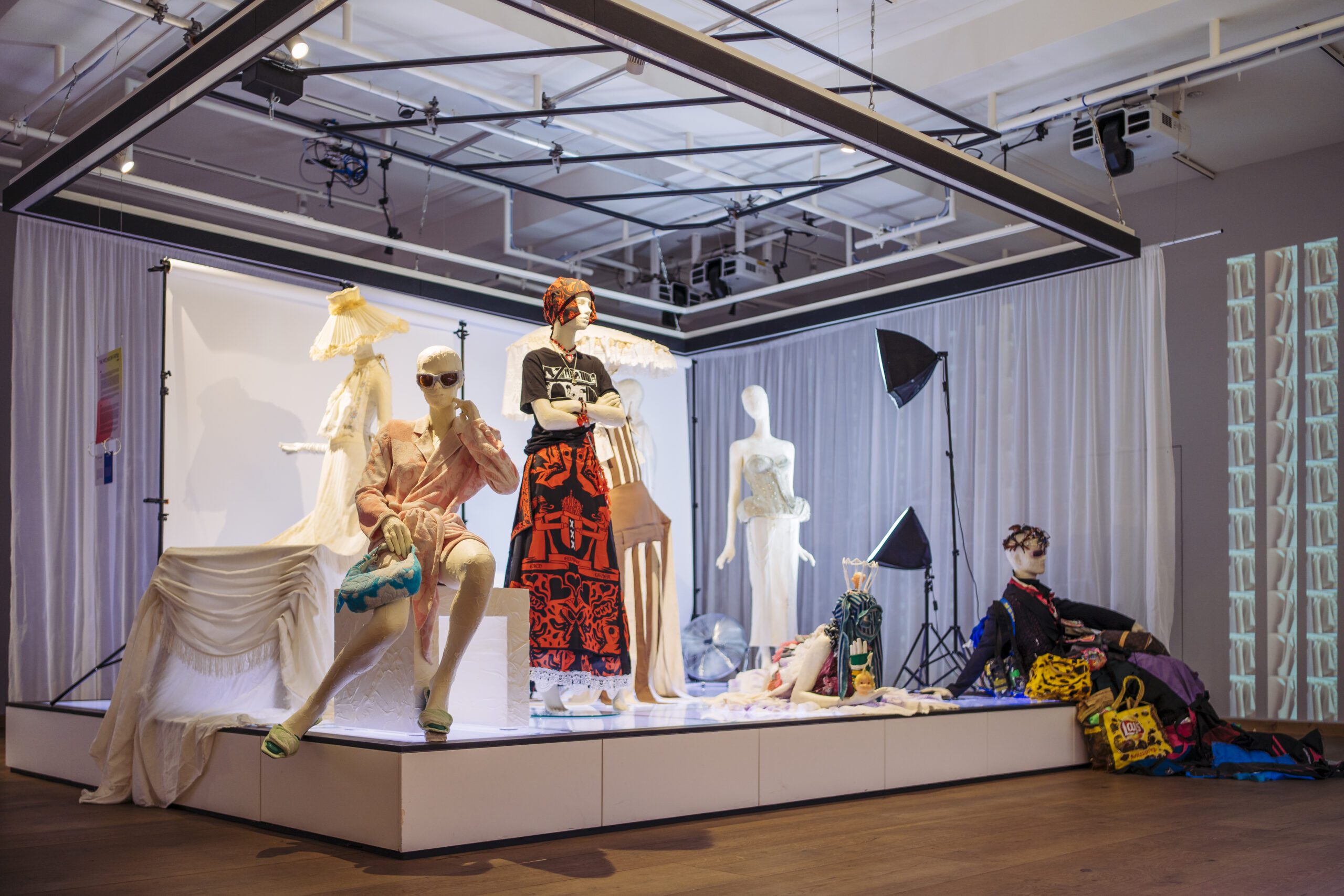Fashion for Good Museum Launches Educational Toolkit: “The Circular Fashion Programme”
8 MARCH 2024
AMSTERDAM – Today, the Fashion for Good Museum launches an educational programme for vocational higher education: the Circular Fashion Programme. This programme focuses on sustainable fashion and circularity, and is available for free on the museum website. The toolkit contains all the resources needed to deliver the Circular Fashion Programme and aims to support teachers in expanding their sustainability skills, to provide them with the knowledge and confidence to teach about complex issues. The programme contains interactive teaching materials such as videos, photos, a glossary and workbook, tailored to future-focused education.
“There is a great need for tools and resources for sustainable development in Dutch fashion education, and through our higher education-focused programme, the Fashion for Good Museum aims to address this. The learning opportunities are offered as open access to share knowledge with anyone interested in and wanting to learn about the themes of sustainable fashion,” said Alyxandra Westwood, Education Coordinator at the Fashion for Good Museum.
Yophi Ignacia, Sustainability consultant, collaborated with Alyxandra Westwood in developing the programme, explains: “We aim to inspire and empower future generations, as they are a key audience within fashion-focused education and will become fashion professionals in the near future. The programme has been tested and developed in collaboration with various schools, with the aim of bridging the current gap between vocational and higher education and offering a new way of learning.”
Why an educational programme?
The Circular Fashion Programme provides teachers in the Netherlands – and beyond – with the tools and resources to integrate sustainability education into fashion-focused education. It is a flexible course that can be adapted to different educational levels and contexts, with the aim of reaching as many students and teachers as possible. The programme will remain available to teachers on the Fashion for Good website, even after the museum closes in June 2024, ensuring that the public continues to have access to valuable resources for the future.
José Teunissen, Director of the Amsterdam Fashion Institute and board member of the Fashion for Good Museum, commented on the programme: “It is of great importance and urgency to introduce students from vocational and higher education to circularity and sustainability. In their future careers, they will have to design according to emerging EU regulations. I am impressed by the programme; it contains a lot of practical and factual information, historical overviews, films, and assignments, while avoiding the grim tone often associated with current polluting fashion practices.”
THE CIRCULAR FASHION PROGRAMME (MBO)
[This curriculum is available in English and Dutch]
The Circular Fashion Programme has been developed to place more emphasis on circularity and sustainable practices within (Dutch) fashion-focused higher education. It has been designed for and with students in Dutch MBO-education (vocational higher education).
The programme is intended to reach a broad audience but specifically to inform, inspire, and activate future fashion professionals by sharing specialised knowledge about creative innovations in the circular fashion industry. The programme focuses on fashion-focused education because the majority of the workforce in the fashion sector (In the Netherlands) has an MBO education, while the circular economy receives insufficient attention there. We have noticed that teachers often lack expertise in this area, which is why we have engaged ROC Amsterdam, Zadkine Rotterdam and the Summa College in Eindhoven as partners in this project, to develop a programme that suits their needs.
This programme is structured as a six-week course, Over the course of six weeks, students will be introduced to circular fashion production, learn about themes such as traceability and end-of-use, and become familiar with innovative solutions to social and environmental issues in the clothing industry.
For example, students will analyse their own clothing to gain a better understanding of the journey of a garment before it reaches the store, and they will consider what small, positive actions they can implement in their daily routines. Finally, students will learn about innovators who positively influence the fashion sector and they will be challenged to apply their newly acquired knowledge by designing a future-forward garment themselves. Themes covered during the lessons and assignments include traceability, production processes, working conditions, sustainable design thinking, cradle-to-cradle, and fashion consumption.
Contents of the programme:
- Teacher’s handbook: this includes a ‘how-to’ overview with frequently asked questions and suggestions to personalise the programme, and six lesson plans, one for each lesson of the programme.
- A set of slides as visual aids, videos, images, and visual summaries of the programme content.
- A workbook with assignments for the students, including a glossary and a list of research sources and tools to support students in their learning process.
- An extensive glossary and a list of sources for further learning.
Acknowledgements:
The Circular Fashion Programme was made possible thanks to the support of the VSB Fonds and the Cultuurfonds.
CLASSROOM OF THE FUTURE: THE STORIES BEHIND COTTON
[This curriculum is available only in Dutch]
The Fashion for Good Museum also published a second Dutch-language educational programme called Classroom of the Future: The Stories Behind Cotton, this is also available on the museum website.
The educational toolkit Classroom of the Future: The Stories Behind Cotton takes students on a journey of six lessons where they will explore the impact of cotton on people and our planet. At the same time, students are encouraged to follow, recognize, and map their own learning and design processes. As the next generation of fashion makers, they gain insight into the history and stories surrounding the material’s impact on the past, present, and future. The toolkit is flexible to apply and suitable for vocational and higher education students focusing on creative studies such as fashion, art, and design. Teachers are encouraged to use the tools as a foundation to build their own context.
Other Articles

6 Reasons to Visit the Fashion for Good Museum Before It Closes Its Doors

Fashion for Good Museum shares its legacy and embarks on a new phase

